Chemistry is all around us, whether we realize it or not. From the food we eat to the products we use to keep ourselves clean and healthy, chemistry in everyday life plays an important role. But how often do we stop to think about it?
In this blog, we will explore the fascinating world of chemistry in everyday life and discover how it affects us in ways we may not have even considered. Join us as we delve into the importance of chemistry in different industries, the chemistry of cleansing agents, and much more. Get ready to see the world around you in a whole new light.
- ▪ Importance of Chemistry in Everyday Life
- ▪ Chemicals of Food in Everyday Life
- ▪ Chemistry of Cleansing Agents in Everyday Life
- ▪ What are Soaps and Detergents?
- ▪ Types of Soaps
- ▪ Chemistry of Cosmetics in Everyday Life
- ▪ Other Examples of Chemistry in Everyday Life
- ▪ The Expiration Date on Bottled Drinking Water
- ▪ Sunblock and Sunscreen
- ▪ Importance of Chemistry in Medicines
- ▪ Importance of Green Chemistry
- ▪ Importance of Chemistry in Textiles
- ▪ Importance of Chemistry in Building and Construction
- ▪ Importance of Chemistry in Fuel
- ▪ Importance of Chemistry in Battery
- ▪ Elements in the Human Body
- ▪ Does Some Fruit Ruin Gelatin?
- ▪ FAQs on Chemistry In Everyday Life
Importance of Chemistry in Everyday Life
Chemistry in everyday life plays a crucial role in our daily lives, making it a significant subject that we can’t ignore. From the food we eat, the clothes we wear, the air we breathe, and the technology we use chemistry is everywhere.
- Chemistry is essential in the production and preservation of food. For example, when we cook, chemical reactions occur that break down complex molecules into simpler ones, making them easier to digest.
- Chemistry plays a significant role in the textile industry. It is used in the production of dyes, fibres, and fabrics.
- It helps in the study of air pollutants and their impact on the environment and human health. For example, chemistry is used to understand the chemical reactions that occur in the atmosphere that lead to the formation of ozone and smog.
- Chemistry in daily life has played a crucial role in the development of technology. From the production of plastics, batteries, and semiconductors to the development of new drugs and much more.
The importance of chemistry in everyday life cannot be overstated. It is a subject that affects every aspect of our lives, from the food we eat to the clothes we wear and the air we breathe.
Chemicals of Food in Everyday Life
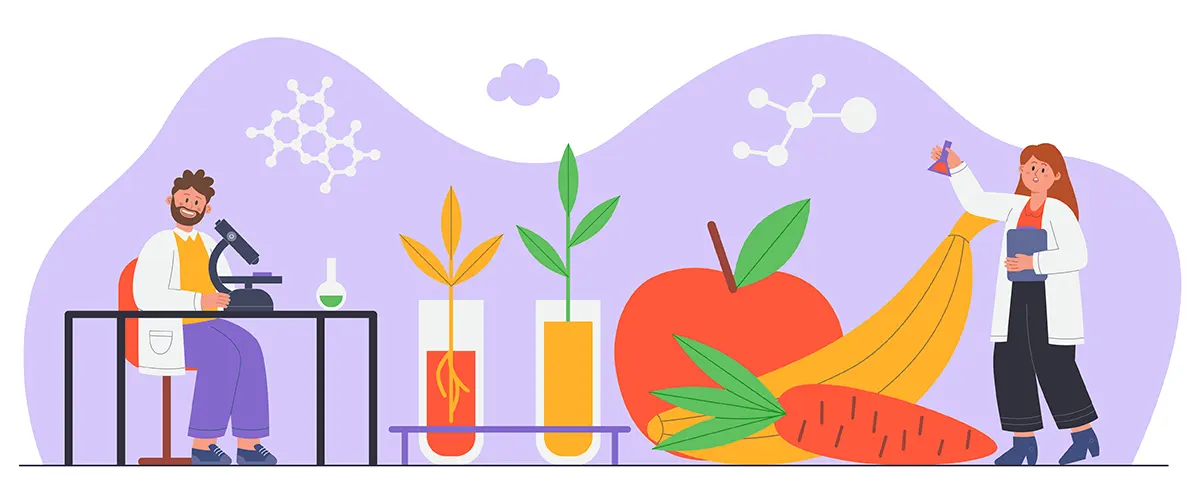
The chemistry of food is crucial to our sustenance and well-being. From the production to the preservation and analysis of food, chemistry is essential. Let’s discuss the chemicals used in food and how they impact our everyday lives.
1. Food Production
Chemicals are used in food production to enhance the appearance, texture, and flavour of food.
- Salt is used in food to enhance the taste and prevent bacterial growth, which can cause food spoilage.
- Other chemicals used in food production include citric acid, which is used in soft drinks, and ascorbic acid, which is used as a preservative in fruit products.
2. Food Preservation
Chemicals are also used in food preservation to extend the shelf life of food.
- One of the most common food preservatives is sulfur dioxide, which is used to preserve dried fruits and wine.
- Sulfur dioxide prevents the growth of bacteria and other microorganisms that can cause food spoilage.
3. Food Analysis
Chemistry is also used in food analysis to ensure the safety and quality of food.
- One example of food analysis is testing for the presence of pesticides in fruits and vegetables. Pesticides are chemicals used to kill pests that can damage crops.
- Another example of food analysis is testing for the presence of bacteria and other microorganisms in food.
To preserve food well and use it to its maximum potential, it is essential to understand chemistry in everyday life.
Chemistry of Cleansing Agents in Everyday Life
The Science Behind Cleaning Agents
Cleaning agents, such as detergents and soaps, are essential in our daily lives. These products help us keep our homes, clothes, and personal hygiene in check. But have you ever wondered about the science behind these products? How are they formulated to effectively remove dirt and stains while being gentle on our skin and the environment? The answer lies in chemistry.
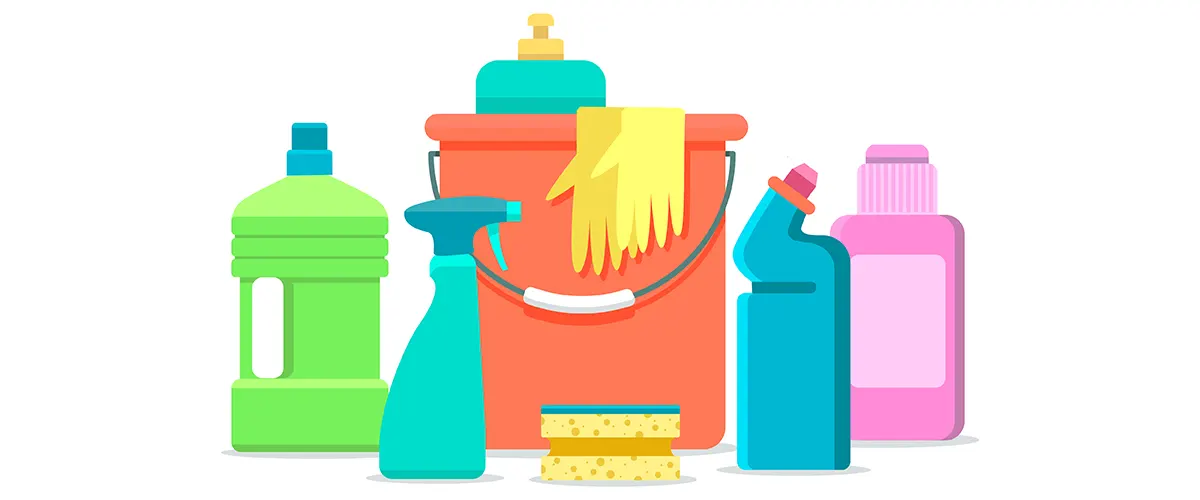
Detergents
- Detergents are synthetic cleaning agents that are widely used in laundry, dishwashing, and household cleaning.
- They are made up of different chemicals that work together to break down dirt and stains.
- The main components of a detergent are surfactants, builders, and additives.
- Surfactants help dissolve grease and oil and suspend dirt in the water.
- Builders work by softening hard water and neutralizing acidic substances.
- Soaps work by emulsifying dirt and oil, allowing it to be washed away with water. They are also effective in killing germs and bacteria.
Many cleaning agents contain chemicals that can have negative effects on aquatic life and ecosystems.
In recent years, there has been a push for more sustainable and eco-friendly cleaning agents. These products are formulated with biodegradable ingredients, such as plant-based surfactants, and do not contain harmful chemicals such as phosphates.
What are Soaps and Detergents?

Soaps and detergents are one of the most common chemicals used in daily life. Let’s break down the chemistry behind the creation of soaps and detergents.
The chemistry behind soaps:
- Soaps are made from natural ingredients such as fats and oils. The chemistry behind soap-making involves a process known as saponification.
- In this process, a strong base, such as sodium hydroxide, is added to the fat or oil.
- The base reacts with the fatty acid molecules in the oil or fat, resulting in the formation of soap molecules and glycerol.
Soaps have some limitations when it comes to cleaning.
- They are not very effective in hard water as the calcium and magnesium ions present in the water can react with the soap molecules, resulting in the formation of scum.
The chemistry behind detergents:
- The chemistry behind detergents involves the use of surfactants, which are synthetic compounds that have a similar molecular structure to soap molecules.
Detergents have some advantages over soaps.
- They are more effective in removing tough stains, and they are less likely to leave a residue on clothes.
- Detergents are also more versatile than soaps, as they can be used in hard and soft water.
Types of Soaps

- Bar Soap
- Bar soap is the most traditional type of soap and is made from a combination of fats, oils, and an alkali substance such as sodium hydroxide.
- The soap is formed through a process called saponification, in which the fats and oils react with the alkali to form soap molecules.
- Liquid Soap
- Liquid soap is a more recent development in the soap industry and has gained popularity due to its ease of use and convenience.
- Liquid soap is also made through a process called saponification, similar to bar soap.
- Detergent Soap
- Detergent soaps are a type of soap that is formulated specifically for cleaning fabrics and other household surfaces.
- Detergent soaps contain a combination of surfactants, enzymes, and other ingredients that work together to break down and remove dirt and stains.
- Antibacterial Soap
- Antibacterial soap is formulated with ingredients that have antimicrobial properties, such as triclosan or benzalkonium chloride.
- Antibacterial soap is commonly used in healthcare settings or in situations where there is a higher risk of infection.
- Organic Soap
- Organic soap is made with all-natural ingredients, such as plant-based oils and essential oils. These soaps are often free from synthetic fragrances and chemicals, making them a popular choice for those with sensitive skin or allergies.
- Organic soaps can be formulated for different skin types and come in a variety of fragrances.
Chemistry of Cosmetics in Everyday Life

The Science Behind Cosmetics
Chemistry in our daily life cannot miss the mention of cosmetics.
Cosmetics and personal care products are familiar products that we use on a daily basis. From shampoos to moisturizers, makeup to fragrances, these products have become a part of our daily routine. But have you ever wondered how these products are made and what makes them work? The answer lies in the science of chemistry.
- One of the most important aspects of cosmetic chemistry is understanding the properties of the ingredients used in the formulation of these products.
- For example, surfactants are a type of ingredient commonly used in shampoos and other cleansing products.
- These ingredients are responsible for removing dirt and grime from our skin and hair. In order for surfactants to work effectively, they need to have the right balance of hydrophilic (water-loving) and hydrophobic (water-hating) properties.
- Understanding these properties is essential for formulators to create effective products.
- Another important aspect of cosmetic chemistry is understanding the interactions between different ingredients. For example, preservatives are often added to cosmetic products to prevent the growth of bacteria and other microorganisms.
- However, some preservatives can interact with other ingredients in the formulation, which can lead to stability issues or even cause the product to become ineffective.
- Understanding these interactions is essential for formulators to create stable and effective products.
Other Examples of Chemistry in Everyday Life
There are multiple uses of chemistry in our daily life. Some of them are as follows-
- Medications
Chemistry is also responsible for the production of medications that we use to treat a variety of illnesses and conditions. Pharmaceutical companies use chemistry to develop new drugs and refine existing ones. Chemistry is essential in ensuring that these medications are safe and effective for patients.
- Food and Beverages
Chemistry plays a critical role in the food and beverage industry. For example, baking soda is used as a leavening agent in baked goods, and citric acid is used as a preservative in drinks. Chemistry is also responsible for the creation of artificial sweeteners, flavourings, and colourings.
- Plastics and Polymers
Plastics and polymers are ubiquitous in our daily lives, from water bottles to car parts. Chemistry is responsible for the creation of these materials, which are made by combining various chemical compounds. By manipulating the chemical composition of these materials, chemists can create plastics and polymers with different properties, such as strength and flexibility.
From cleaning products to medications, food and beverages to plastics and polymers, cosmetics to agriculture, chemistry plays a critical role in our day-to-day experiences.
The Expiration Date on Bottled Drinking Water
Bottled water bottles are a common chemistry in day-to-day life.
Water is one of the common chemicals in our daily life. There is actually a scientific reason behind the expiration date of your water bottle.
The Chemistry Behind the Expiration Date
- It is important to understand that water is a chemical compound made up of two hydrogen atoms and one oxygen atom, commonly referred to as H2O. While pure water itself does not have an expiration date, the way it is stored can impact its quality over time.
- Bottled water is typically purified and treated to remove impurities and contaminants before it is bottled. However, even with these treatments, there is still a risk of bacterial growth or other contaminants entering the water once it is bottled.
This is why many bottled water companies use expiration dates to indicate when the water is no longer considered safe to drink.
In addition, the plastic used to make the bottle can also impact the water’s quality over time. As the plastic degrades, it can release chemicals into the water, affecting its taste and quality. This is why it is important to store bottled water in a cool, dark place and not in direct sunlight or extreme temperatures.
Sunblock and Sunscreen
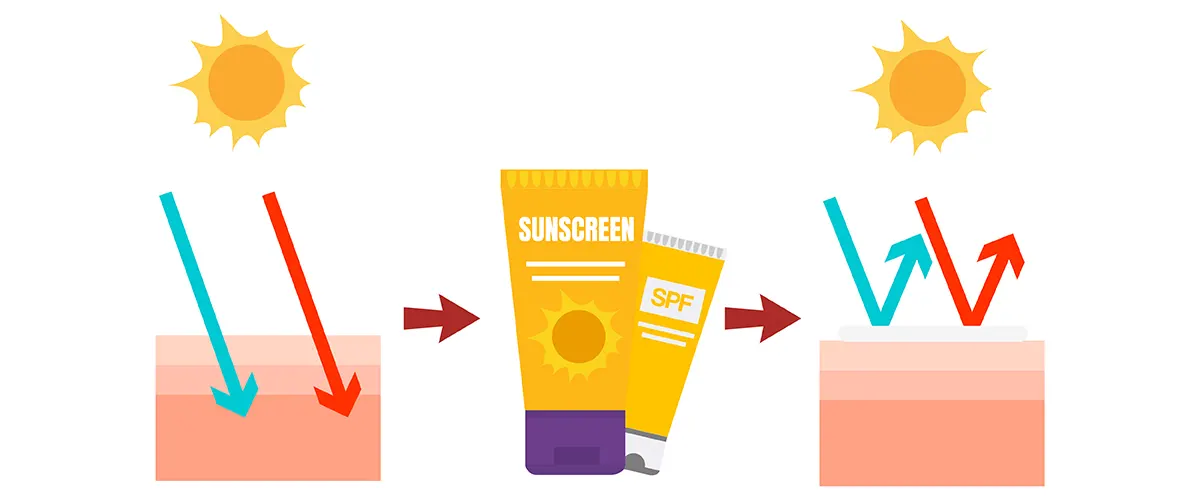
Sun protection is a regular chemical used in daily life. They are two of the most common methods for protecting our skin from the harmful effects of the sun’s UV rays. But have you ever wondered how they actually work?
- Sunblock and sunscreen both work by forming a barrier between the skin and the sun’s rays. However, they do so in different ways.
- Sunblock, also known as a physical sunscreen, contains ingredients such as zinc oxide or titanium dioxide. These ingredients work by reflecting the UV rays away from the skin, much like a mirror. This is why sunblock is often associated with a thick, white appearance on the skin.
- On the other hand, sunscreen, also known as chemical sunscreen, contains ingredients such as avobenzone or oxybenzone. These ingredients work by absorbing the UV rays and converting them into heat, which is then dissipated from the skin. This is why sunscreen is often associated with a thinner, more invisible appearance on the skin.
But why do we need to protect our skin from the sun in the first place? The answer lies in the chemistry of our skin.
Our skin is made up of cells that contain DNA. When UV rays penetrate the skin, they can cause damage to the DNA in these cells. Over time, this damage can accumulate and lead to skin cancer.
By using sunblock or sunscreen, we can prevent or reduce the number of UV rays that penetrate our skin, thus reducing the risk of skin damage and skin cancer.
Importance of Chemistry in Medicines
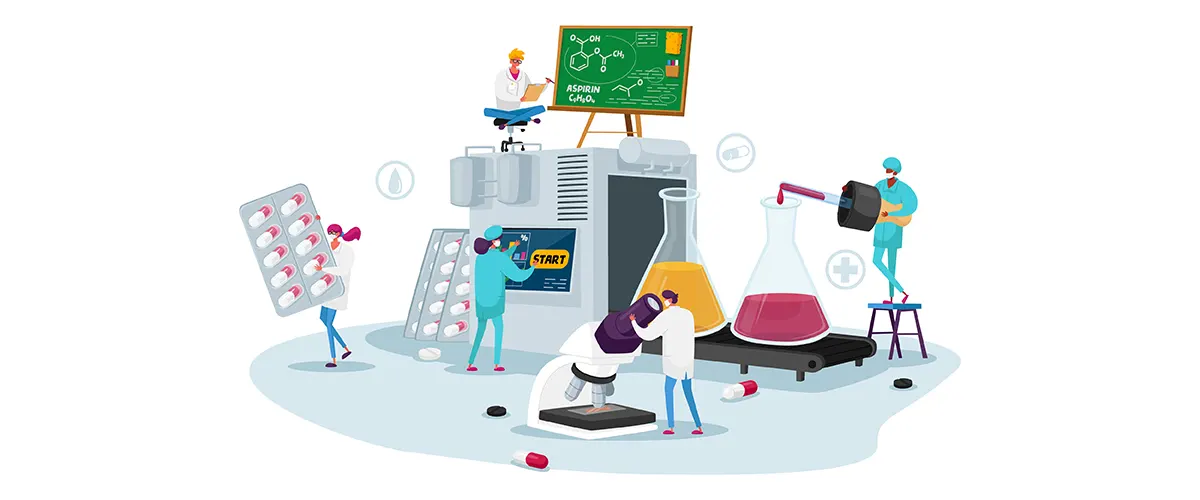
Medicines are one of the common chemicals in daily life. Chemists use their knowledge of chemical reactions and properties to develop new molecules that can be used as drugs.
- Pharmaceutical companies use chemical reactions to manufacture drugs on a large scale. They use chemical synthesis to produce the active pharmaceutical ingredient (API) of a drug.
- The API is the main component of a drug that produces the desired effect. Pharmaceutical scientists also use chemistry to develop the formulations of drugs. They use various excipients, such as fillers, binders, and coatings, to create tablets, capsules, and other dosage forms.
Chemistry is also essential in drug discovery and development.
- Scientists use various analytical techniques, such as chromatography and spectroscopy, to identify and quantify the active ingredients in a drug. They also use chemistry to determine the safety and efficacy of a drug.
- Chemistry is also used in quality control and assurance to ensure that drugs meet the required standards.
Chemistry plays a vital role in the development, formulation, and production of medicines. It is an essential tool in drug discovery and development and helps to create new drugs that are safe, effective, and have fewer side effects.
Importance of Green Chemistry
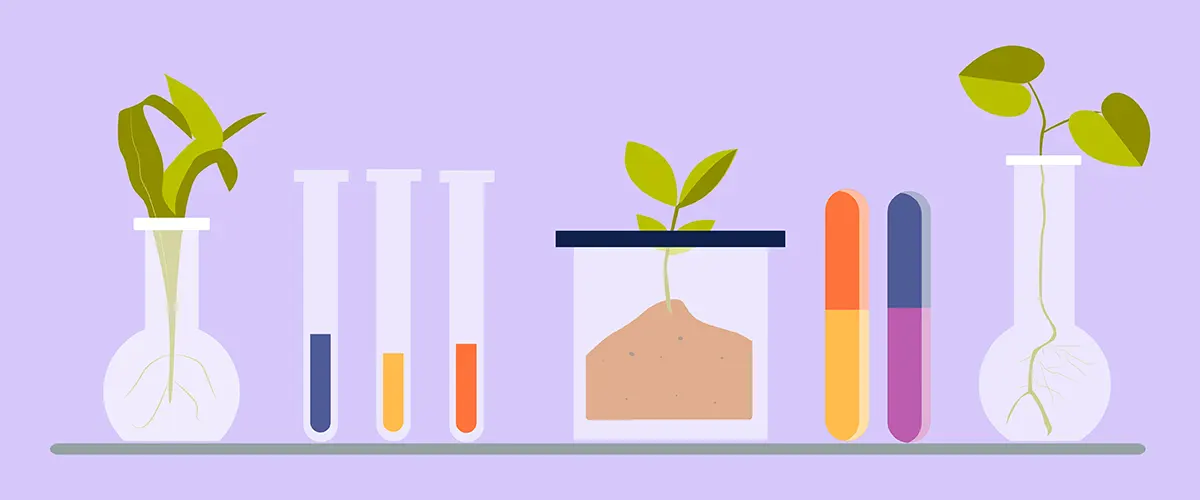
There is chemistry in your daily life. Thus, the importance of green chemistry cannot be overstated. Here are some reasons why:
1. Reducing Pollution
Green chemistry helps to reduce pollution by minimizing the amount of waste produced during chemical processes. By creating less waste, less pollution is released into the environment.
2. Saving Energy
Green chemistry helps to save energy by optimizing the use of resources. This means that less energy is required to produce the same amount of product.
3. Protecting Human Health
Chemicals used in everyday life can have harmful effects on human health. Green chemistry helps to reduce the use of hazardous chemicals, thus reducing the risks associated with exposure to these substances.
4. Encouraging Innovation
Green chemistry encourages the development of new chemical products and processes that are more sustainable and environmentally friendly.
5. Promoting Sustainable Development
By reducing waste, saving energy, and protecting human health, green chemistry helps to create a more sustainable future for all of us.
In conclusion, green chemistry is vital to protecting our planet and promoting sustainable development.
Importance of Chemistry in Textiles
The role of chemistry in our daily life will be incomplete without the mention of textiles. Without chemistry, the textile industry would not exist in its current form, and we would have to rely on natural fibres to produce our clothing, which would be both expensive and impractical.

- The use of chemistry in textiles begins with the production of fibres. Synthetic fibres, such as polyester, nylon, and acrylic, are all made using chemistry.
- These fibres are created from petrochemicals, which are transformed through a series of chemical reactions into fibres that can be spun into yarn.
- This process enables them to be produced in large quantities and at a low cost, making them a popular choice in the textile industry.
Even natural fibres, such as cotton and wool, undergo chemical treatments to improve their functionality.
For example, cotton is often treated with chemicals to remove impurities, whiten it, and make it more absorbent. Wool, on the other hand, is treated with chemicals to improve its ability to be dyed and to make it more resistant to shrinking.
Importance of Chemistry in Building and Construction
Chemistry is used to enhance the performance of construction processes and to ensure that they are safe for humans and the environment.
- Chemistry in building materials:
Construction materials such as concrete, steel, and asphalt are all products of chemical reactions. The chemical properties of these materials can be altered to improve their strength, durability, and resistance to environmental factors such as corrosion and weathering. For example, the addition of chemical admixtures to concrete can improve its workability, strength, and durability.
- Chemistry in construction processes:
Chemical grouts are used to fill cracks and voids in concrete structures, making them more stable and resistant to water penetration. Chemical bonding agents are used to improve the adhesion between old and new concrete, making repairs more effective.
- Chemistry in sustainability:
Sustainability is a critical issue in the construction industry. Chemistry is used to develop new sustainable building materials and processes. For example, the use of bio-based materials such as bamboo and hemp can reduce the carbon footprint of construction. Chemistry can also be used to develop new building insulation materials that reduce energy consumption in buildings.
Importance of Chemistry in Fuel
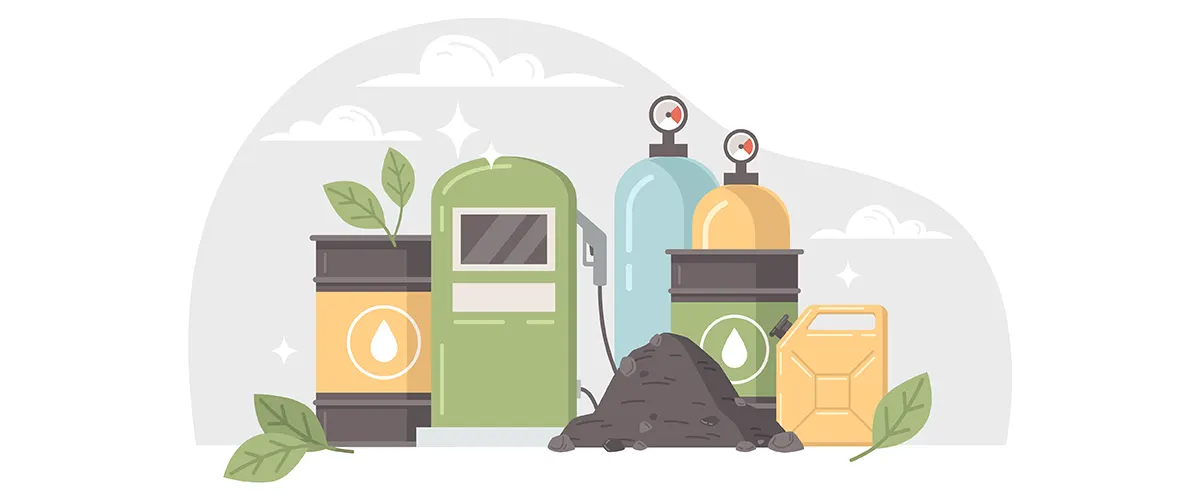
In the production and use of fuel, chemistry plays a critical role in ensuring that the fuel is efficient, safe, and environmentally friendly.
- Chemistry Used in the Production of Fuel
- Chemistry is used extensively in the production of various types of fuel, including fossil fuels, biofuels, and hydrogen gas.
- Fossil fuels, such as coal, oil, and natural gas, are formed from the remains of ancient plant and animal life that have been buried and compressed over millions of years.
- The chemical processes that occur during the formation of fossil fuels are complex and involve the transformation of organic matter into hydrocarbons.
- Chemistry Used in the Use of Fuel
- Chemistry is also used in the use of fuel, particularly in the combustion process.
- Combustion is the chemical reaction that occurs when fuel is burned in the presence of oxygen.
- The chemical reactions that occur during combustion produce heat and other byproducts such as carbon dioxide and water vapour.
Importance of Chemistry in Battery
The chemical reaction that occurs between the electrodes and the electrolyte determines the battery’s voltage, capacity, and lifespan. Different types of batteries use different chemical reactions, which are optimized for specific applications.
The importance of batteries in our daily lives cannot be overstated. Here are a few examples:
1. Portable Electronic Devices: The batteries in our smartphones, laptops, tablets, and other portable devices allow us to stay connected and productive on the go.
2. Electric Vehicles: The batteries in electric vehicles are the key to their success. They allow us to travel long distances without emitting harmful pollutants, making them an eco-friendly alternative to traditional gasoline-powered vehicles.
3. Renewable Energy: Batteries play a critical role in storing renewable energy generated from sources like solar and wind power.
4. Medical Devices: Many life-saving medical devices such as pacemakers and defibrillators rely on batteries to provide power.
Elements in the Human Body
One of the most fascinating aspects of chemistry is the role it plays in our bodies. The human body is made up of various elements that are essential to life.
Carbon (C)
Carbon is a vital element that is present in almost every molecule in the human body, including carbohydrates, proteins, and nucleic acids.
Hydrogen (H)
Hydrogen is involved in various bodily processes, including the production of ATP (adenosine triphosphate), which is the energy currency of the body.
Nitrogen (N)
Nitrogen is a critical component of amino acids, which are the building blocks of proteins. Nitrogen is also present in nucleic acids, such as DNA and RNA, which carry genetic information.
Oxygen (O)
Oxygen is a vital element that is necessary for the survival of all living organisms. Oxygen is also essential for the function of various organs, including the brain and heart.
Calcium (Ca)
Calcium is responsible for the formation and maintenance of strong bones and teeth. Calcium is also involved in various bodily processes, including muscle contraction and nerve function.
Understanding the role of these elements in the human body can help us appreciate the importance of chemistry in everyday life.
Does Some Fruit Ruin Gelatin?
Let’s take a closer look at the chemistry behind the reaction between fruit and gelatin.
- Gelatin is a protein derived from collagen found in animal bones, connective tissues, and skin.
- When gelatin is mixed with water and heated, the protein molecules unwind and form a web-like structure that traps the liquid, resulting in a solid gel. However, this process can be disrupted by the addition of certain fruits.
- Fruits containing protease enzymes such as pineapple or high levels of acidity can interfere with gelatin’s ability to set properly.
- By understanding these reactions, we can make informed decisions when choosing fruits to use in gelatin desserts.
Chemistry is a part of our everyday lives, and understanding it can help us create better culinary experiences.
In conclusion, chemistry plays a crucial role in our daily lives. From the food we eat to the products we use and wear, understanding chemistry in everyday life is important.
FAQs on Chemistry In Everyday Life
Q1. In what ways does chemistry impact our daily lives?
Chemistry is indispensable in fulfilling our fundamental necessities, including food, clothing, shelter, health, energy, and access to clean air, water, and soil.
Q2. What are the three interesting products involving chemistry in our daily routines?
Clothes, sunscreens and water.
Q3. What is an interesting part of chemistry?
A single bucket of water has a greater number of atoms than the total number of buckets of water found in the Atlantic Ocean.

